The benefits of 3d printers for medicine and rocket science: desktop FDM versus industrial metal (can 500 zerlings overwhelm a dark templar?)
Not. This is not a moonshine.

Design layout of the on-board power source for the newest heavy-duty oxygen-hydrogen upper stage unit (RB KVTK) for the Angara heavy rocket
NASA sent a man to the moon and back, and now on smartphones that exceed the computing power of NASA computers, people send “Yo!” To each other, and birds to pigs.
With 3d printing is almost the same situation. It is clear that metal 3d-printers are already working wonders, they have been printed on both a liquid-fuel jet engine for a spacecraft and a gas turbine engine. But what about plastic? Print whistles or covers for phones?
')
What is useful (really useful) printed ABS / PLA plastics in Russia? I threw the call to my fellow hackers, they advised to contact the company that produces plastic for 3d printers REC (once I went to visit them and described the PLA production process ). In addition to the iron man's costume (more than 10 km of plastic, more than 1200 hours of printing), there are also practically useful examples from medicine and rocket production.
2 years after the start of writing on Habré about 3d-printers, I still managed to get into the shop with a metal printer. And he held the secret rocket engine in his hands. A brief overview of the industrial metal printer. Now everyone can feel like Ilon Mask and print his own rocket engine. Or a bunny.
Metal 3d-printers are widely used in dentistry and prosthetics .
Plastic is also beneficial.
Health sprint

This startup is a resident of Neuron Hackerspace. They make individual comfort orthoses for the forearm and fingers. In early 2015, he attracted $ 100,000 in a sowing round of financing from Maxfield Capital venture fund.
The project uses printers Replicator 2, and about the material for printing Fedor Aptekarev, the founder of the project, says the following:
“We take the choice of plastic very seriously, we tested a lot of options and focused on REC products. Firstly, they have a pleasant color range, which is important, as it is a little uplifting. Secondly, since our products are medical in nature, it is important for us to see how this plastic is made and what the shop looks like. And what exactly this thread came out of this machine (and not as Chinese plastic - today from one basement of China, tomorrow from another). We checked REC PLA in the lab and got evidence that it is non-toxic. ”
Fedor's speech about his project
Motility
(a bit offtopic, as printed with plastic, but on industrial printers)

Motorika is developing functional upper limb prostheses for children and adults, as well as new methods of teaching and rehabilitating people with upper limb injuries.
Currently, Motorika produces two products: an active traction prosthetic brush and a multifunctional prosthesis of the forearm with myo-control.
Artificial brush "Stradivary"
Demonstration of the prosthesis (Daniel from Saratov)
Speech by the head of the company, Ilya Chek, on the “science fights” Science Slam
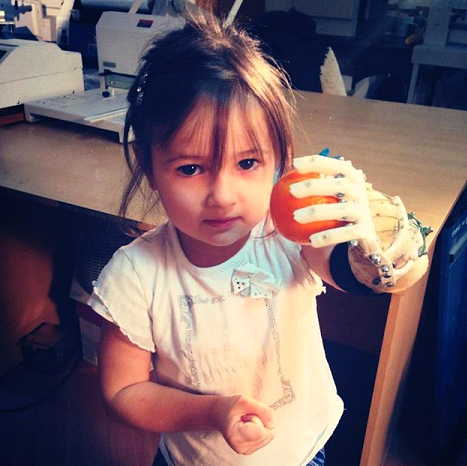
Article about the creation of the first prosthesis on Habré.

7 kilograms of plastic and a month of work was spent on the project. Printed on Replicator 2x - on two printers in parallel, ABS plastic from REC.
Thanks to Alexander from FSUE GKNPTs them. Mv Khrunichev for sharing information about his project, as well as colleagues from KBhimmash them. A.M. Isaeva.
UPD
Alexander's colleagues turned to me and now I decided to restore justice and tell a few words about the creator of the project.
Alexander Kuznetsov, leading engineer, in his 28 years (with a state award - engineering fame). He began by assembling RepRapa himself, then at the RKZ plant (rocket space plant), Khrunichev made a prototyping and additive technologies laboratory and continues to develop it as far as possible.
The project BIP laid 1-1.5 years and several million rubles.
Alexander did it in 1.5 months and 400 times cheaper.
The model accelerated the search for problems and turned out to be useful even for welders; they also need models to understand how to crawl with welding.
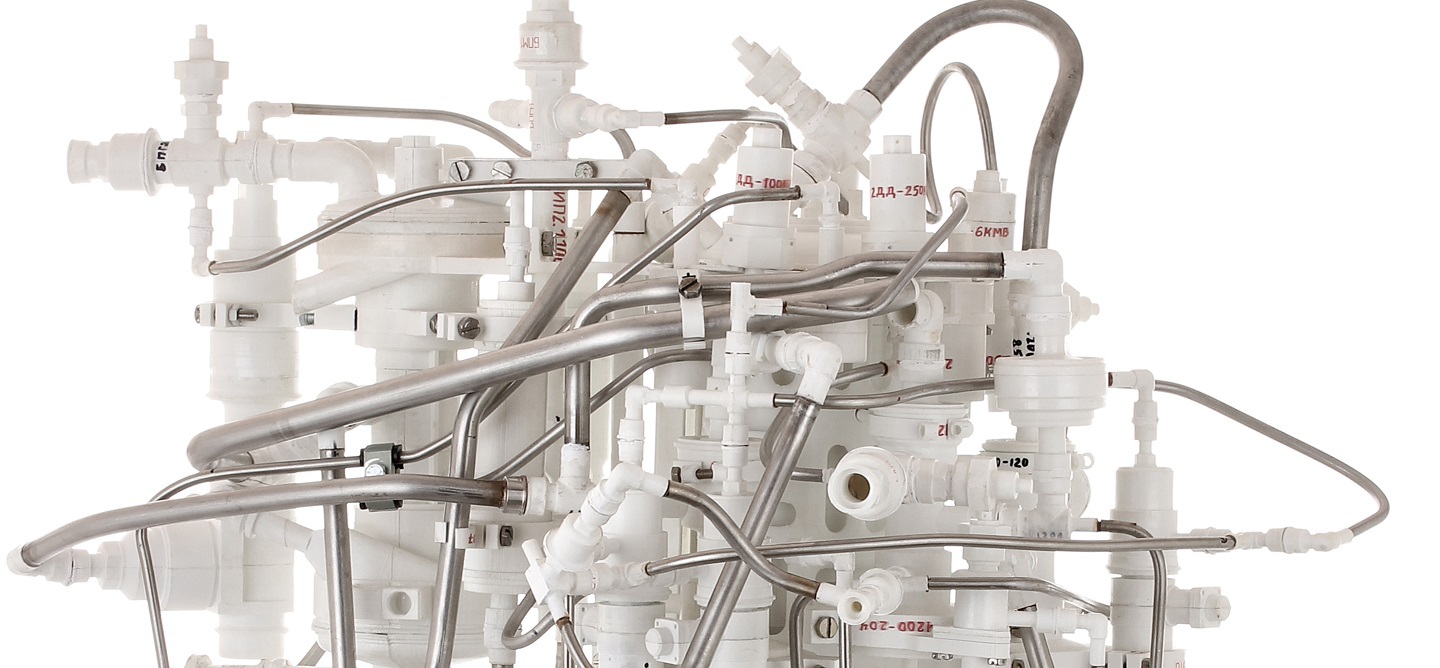
Computer modeling, while remaining virtual, does not solve all problems and does not allow to detect all errors and shortcomings in the design of products and their blocks, i.e., complex prefabricated systems consisting of units of various purposes and interconnected by “tricky” geometrical layout.
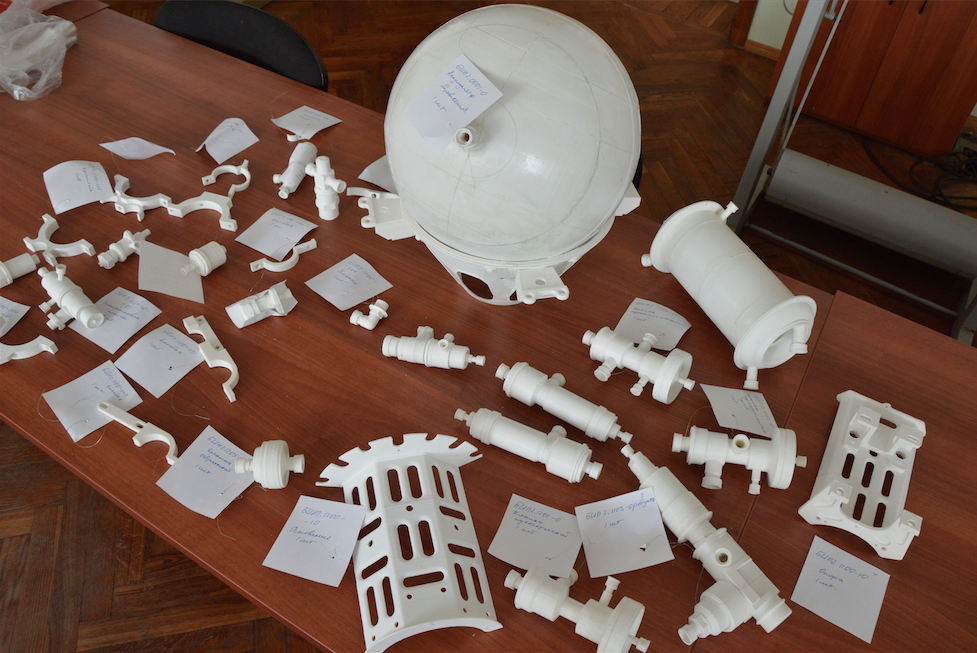
In KBhimmash them. A. M. Isaeva in the framework of work on the newest heavy-duty oxygen-hydrogen upper stage unit (RB KVTK) for the Angara heavy rocket, research is being carried out on the possibility of using additive 3D printing technology with plastic materials for the manufacture of a design mock-up of an onboard power source (BIP). BIP is designed to supply the working fluid with the specified parameters (flow, pressure, temperature) of 2 hydraulic actuators of the hydraulic system of electrohydraulic servo drives (GS EHS) ensuring the functioning of the Angara rocket engine RD0146D.

BIP is a rather complex system, both in terms of circuit design and in terms of design. It includes a wide range of different units, such as regulators, gearboxes, pneumatic and electropneumatic valves, a turbopump unit, a heat exchanger, etc. On the other hand, the BIP has acceptable overall dimensions (460 × 650 × 750 mm), which allows you to choose it from a point view of working off technology.
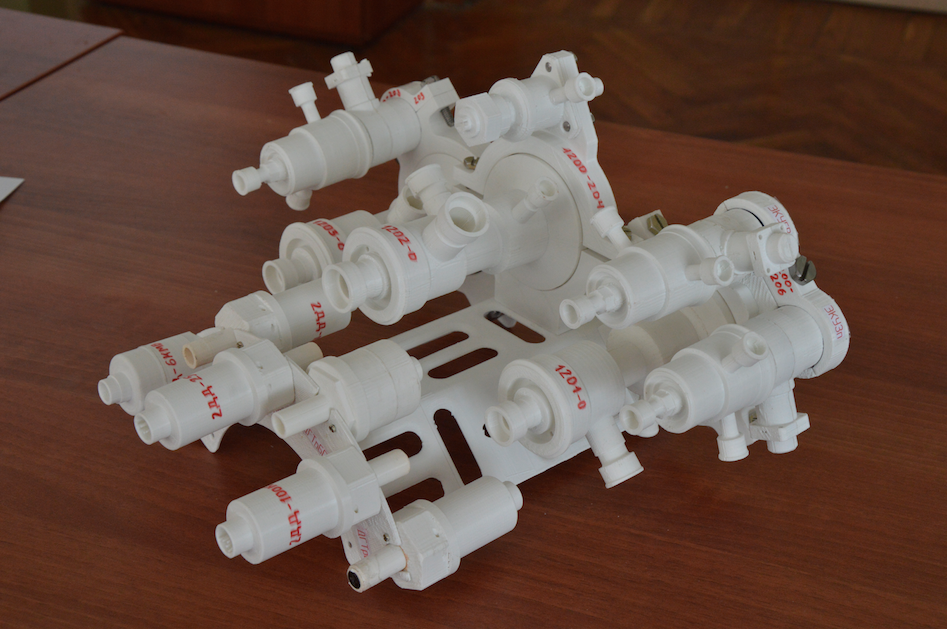
At the first stage of preparation of solid-state models for printing, it was considered more reasonable to refuse printing fasteners and use metal bolts, nuts, etc. to build the layout. This decision was explained on the one hand by the laboriousness of making 3D models of fasteners with “drawn” thread and a minimum pitch of 1 mm in this thread (which is required to ensure acceptable printing accuracy), on the other hand by the availability and prevalence of various metal fasteners.
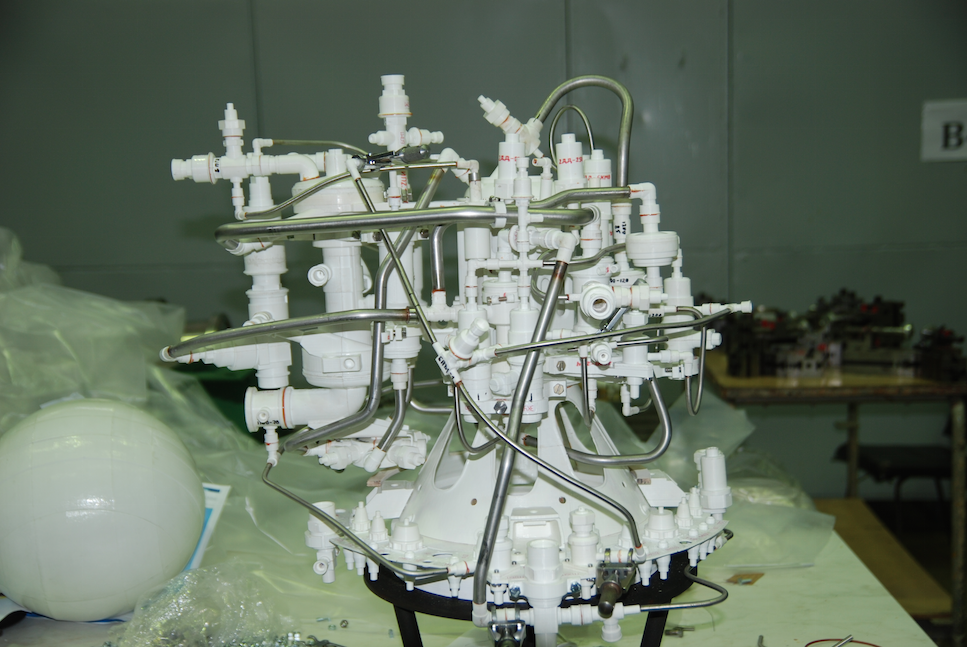
At the stage of printing models, it was decided to abandon the idea of printing pipelines of a given geometry. The decision was made due to the presence of shrinkage and inaccuracies of the geometrical dimensions of the produced plastic models and the impossibility of bending or adjusting the plastic pipeline “in place” on the assembled layout. As a result, the probability of a mismatch between the coordinates of the end elements of the pipelines and the coordinates of the response elements turned out to be too high. The use of metal pipes eliminated this problem by the possibility of “bending” the pipes “in place”. However, metal, and, consequently, heavier pipelines would create a significant load on the supporting elements of the layout, made of plastic. As a result of the analysis, a compromise solution was chosen: the pipeline elements (elbows, tips, tees, etc.) were made of plastic, and the pipes were made of metal. At the same time, the wall thickness of the pipes was replaced as much as possible from 1 mm to 0.5 mm to facilitate the whole structure.
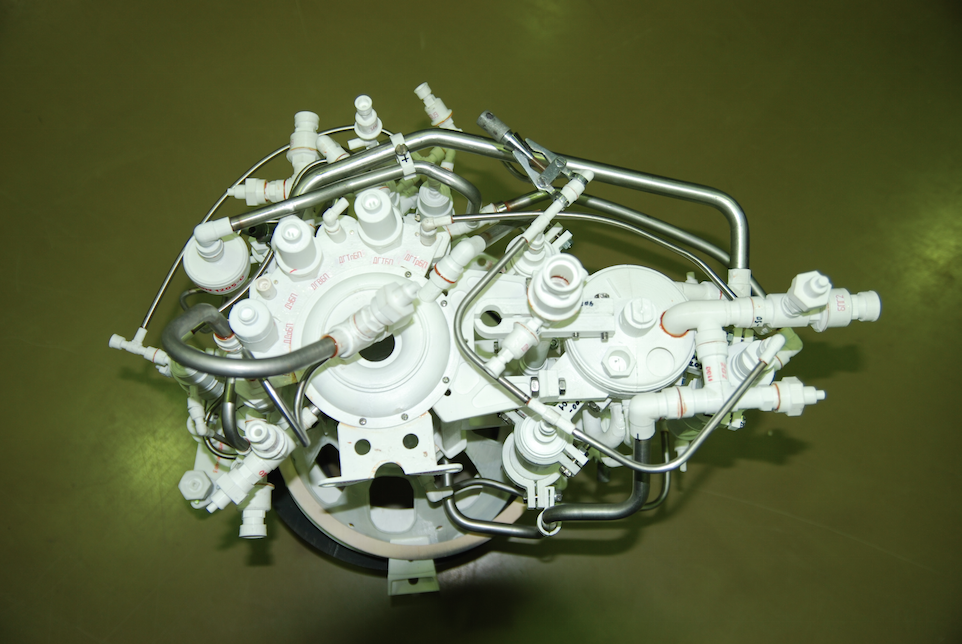
Due to the difficulty of making threads using a printer, it was decided to make them with swords and dies on the finished plastic parts. There were problems with the implementation of external threads on cylindrical surfaces of parts, but they turned out to be completely solvable by simply increasing the percentage of material filled with the material when printing elements.
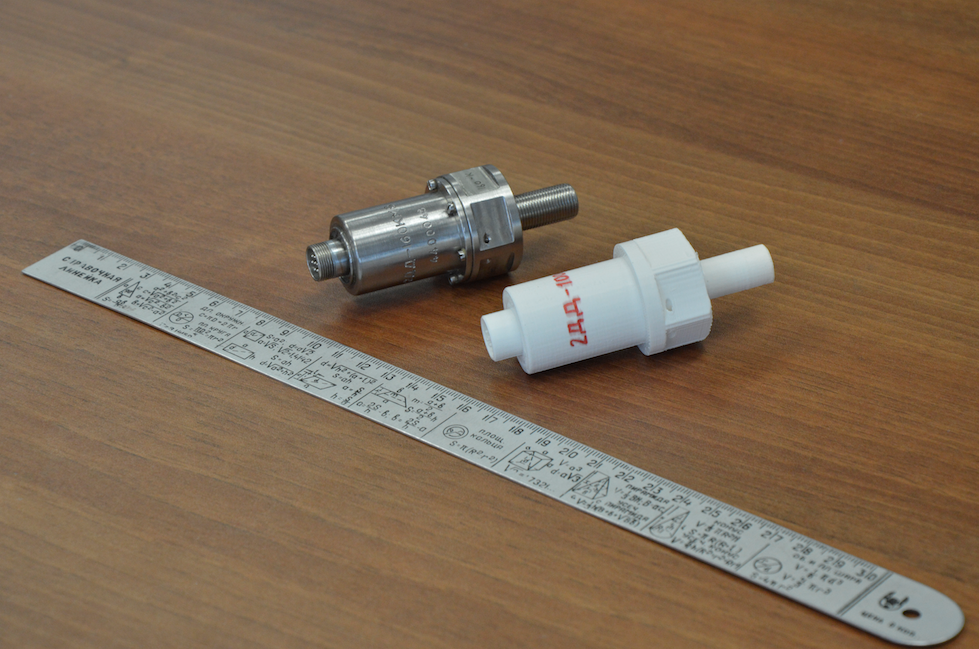
Carrying out the same functions as the usual metal design layout (checking the collection, testing assembly technology, finding errors and inaccuracies in the design documentation, laying electricians, etc.), the plastic layout is much cheaper. According to preliminary estimates, its cost is 10-15 times less than the cost of a design model of metal. There is no need to attract a large number of related services and workers who contribute additional operations to the process (ordering and cutting metal, designing and manufacturing dies, turning, milling and other mechanical operations, etc.). The chain of performers is reduced to “designer - operator of a 3D printer - fitter”, which, in turn, also significantly speeds up and simplifies the process of making a design layout.
Layout looks solid at exhibitions
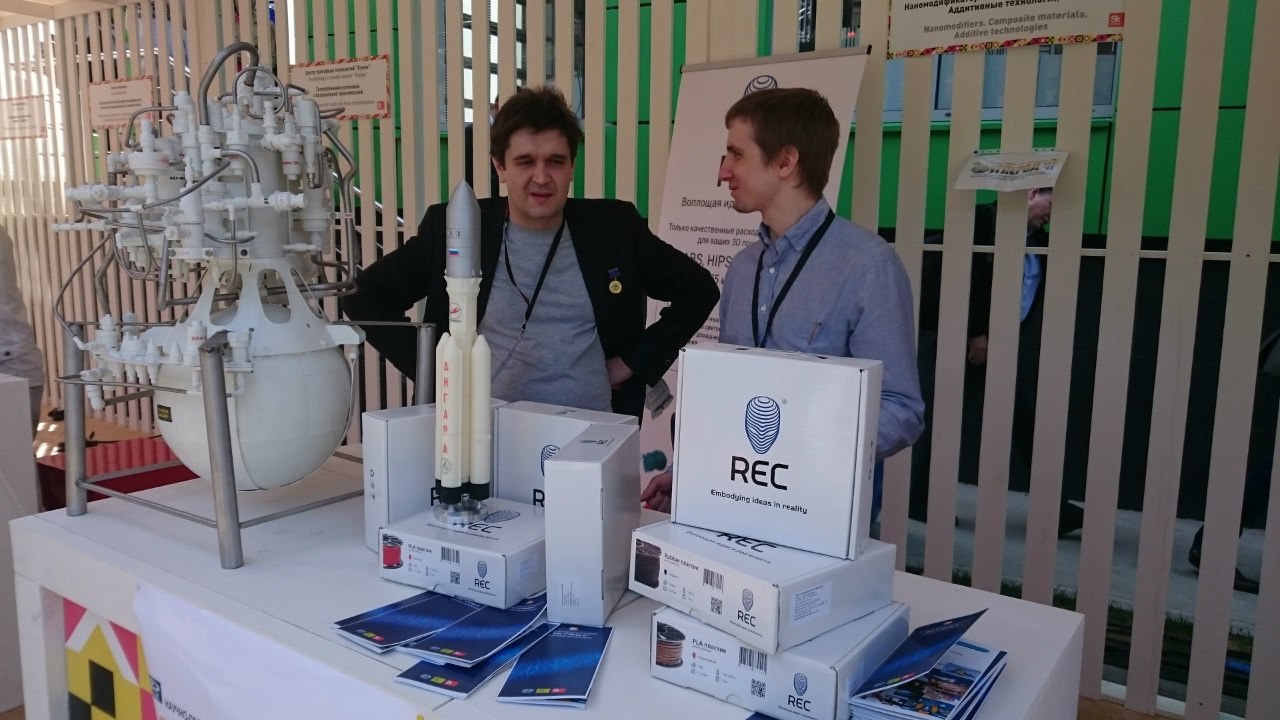
PS
Ivan Moshkin from the “ 3D Printing Lab ” suggested a cool and useful thing for those who like to solder
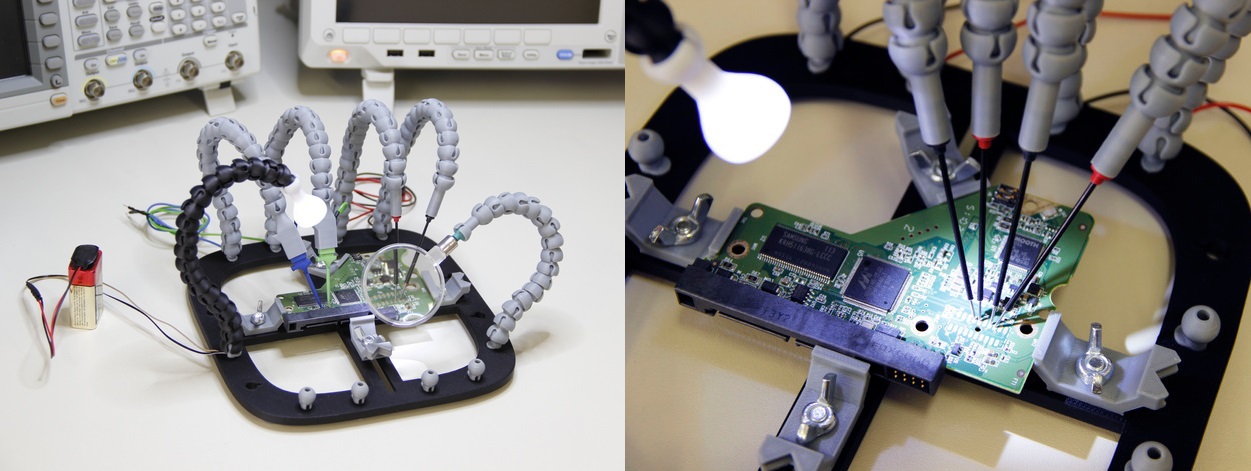
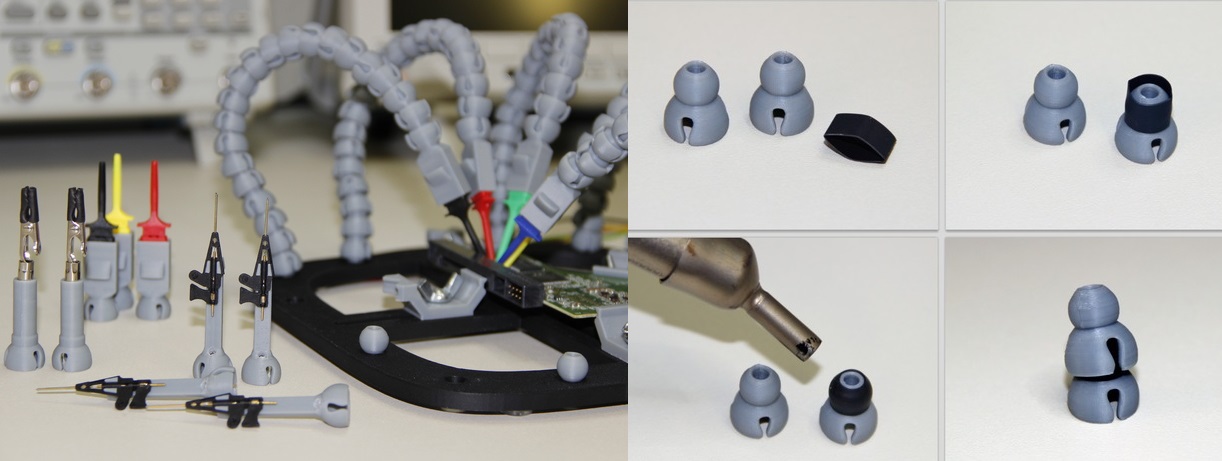
Download thing thingiverse.com/thing:801279

The cost of 1 000 000 euros (~ 500 desktop 3d-printers).
Technical details
Dimensions (L x W x H)
Data preparation
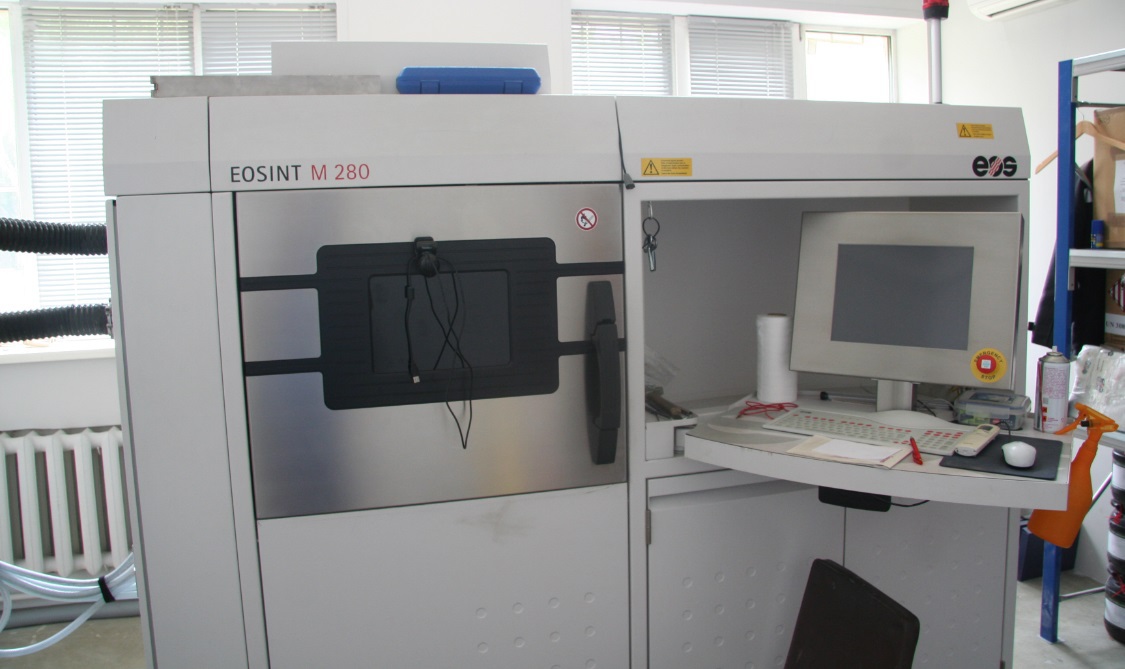
Top right - siren with flasher, if something went wrong
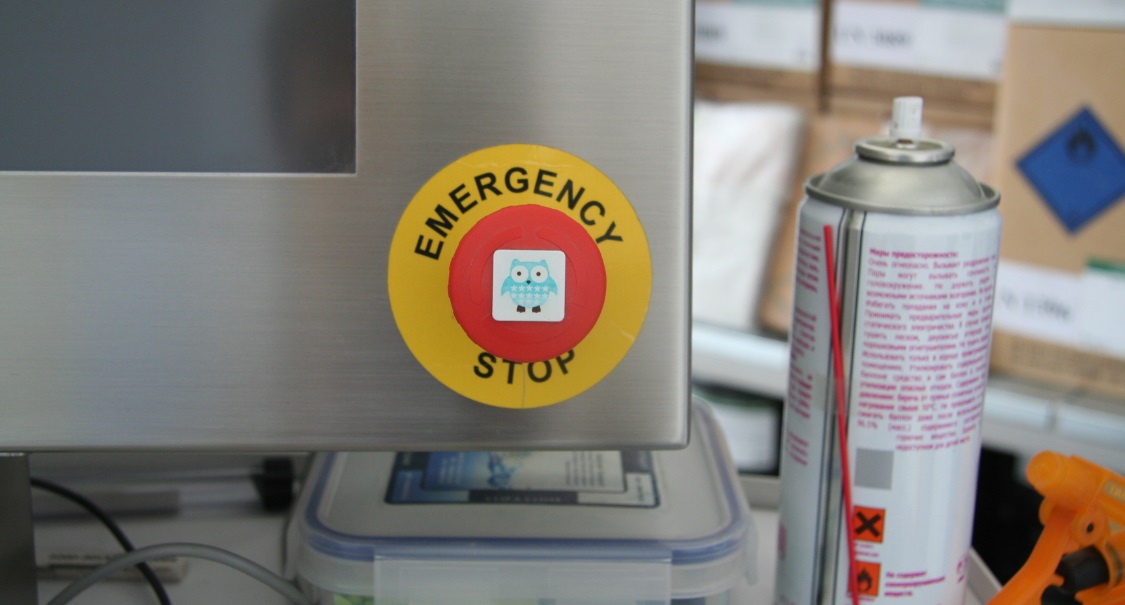
Alarm button
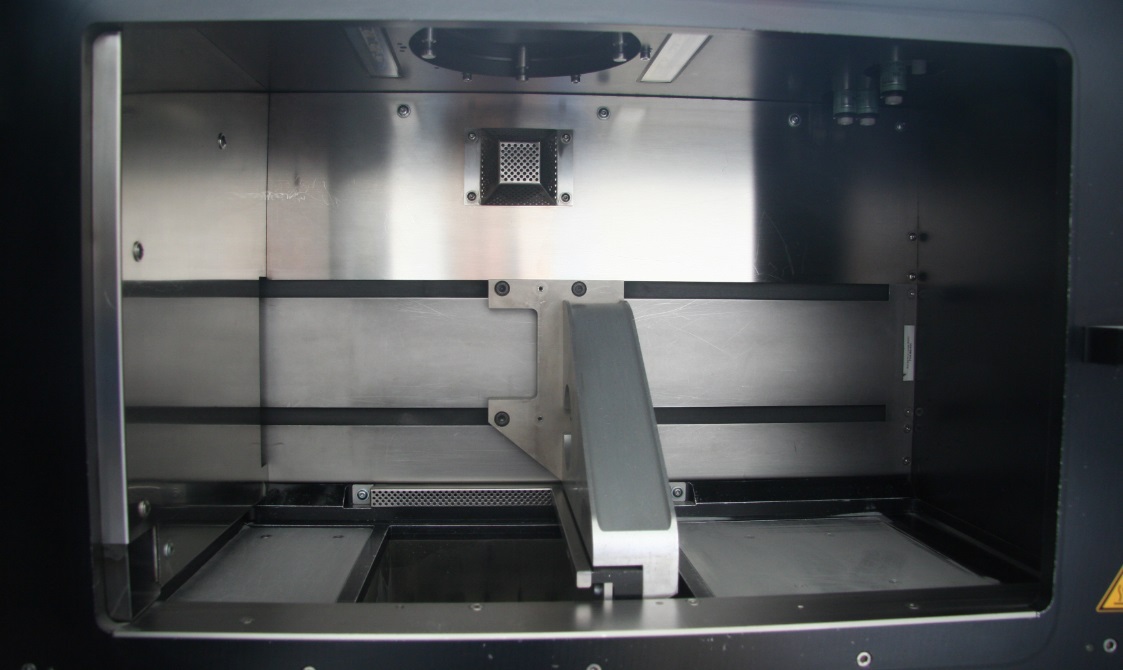
Camera for baking. Inside the chamber - gas. The system can work with nitrogen or argon as a protective gas. This allows you to use a wide range of materials on the installation: light metals, stainless and tool steels, titanium, nickel alloys, cobalt.

Gas sensors

A window with a laser. 400W Solid State Ytterbium Fiber Laser
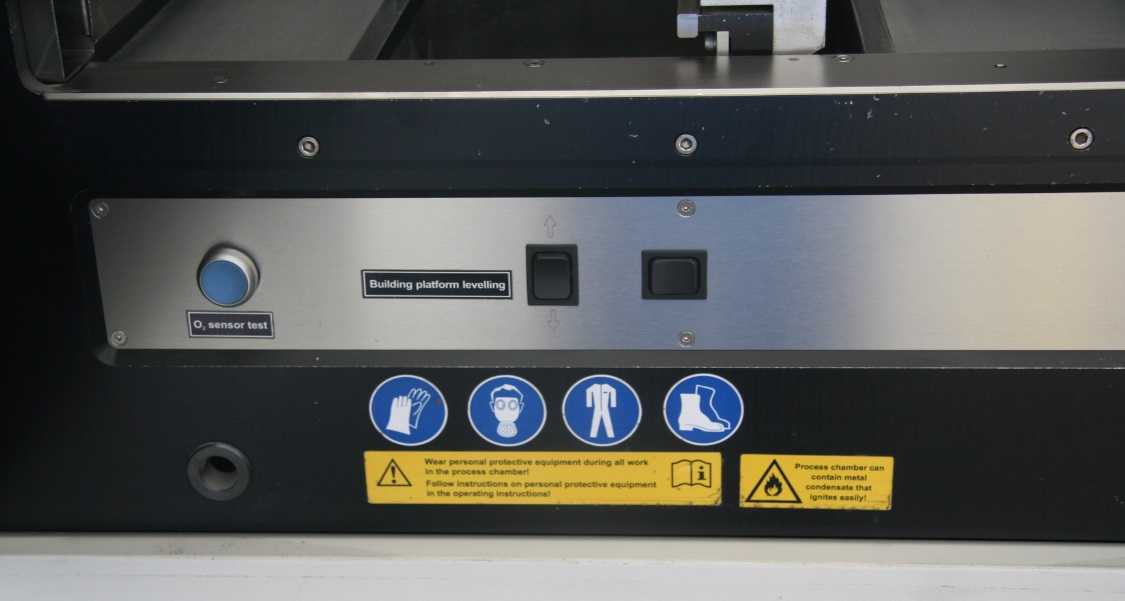
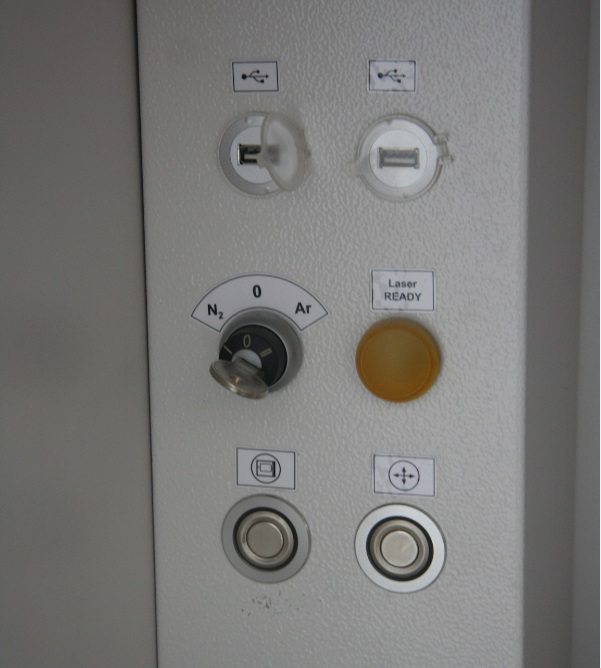
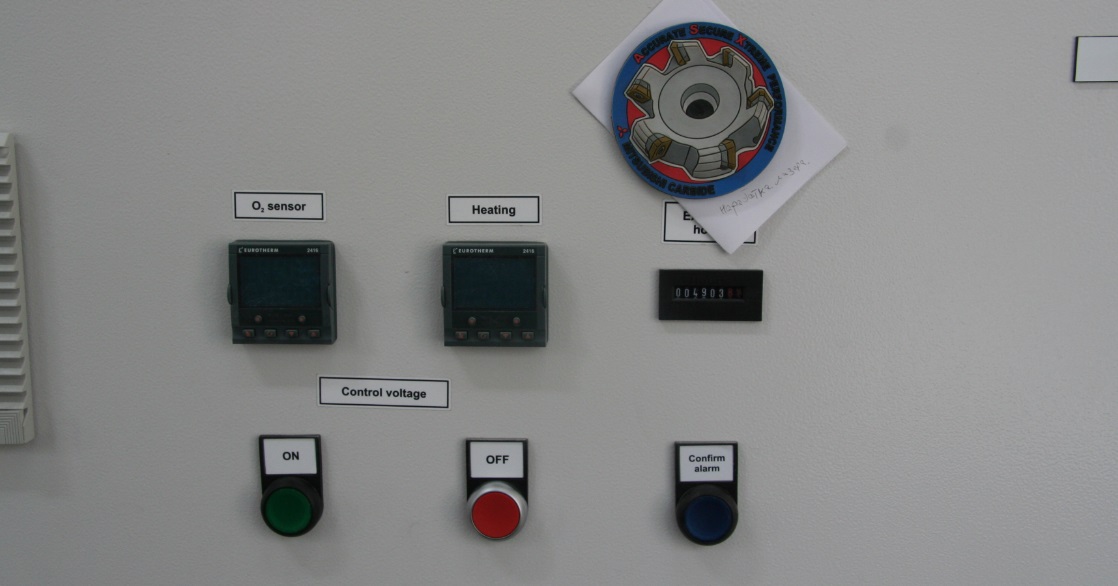
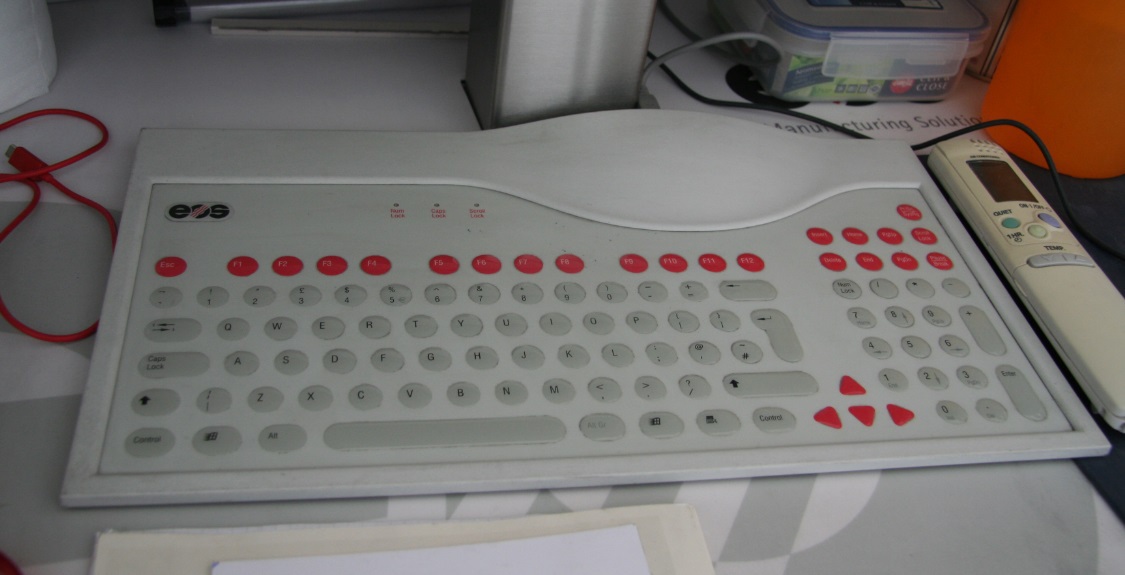
Unkillable keyboard

"Coolers". The cooling system lurked in the next room.
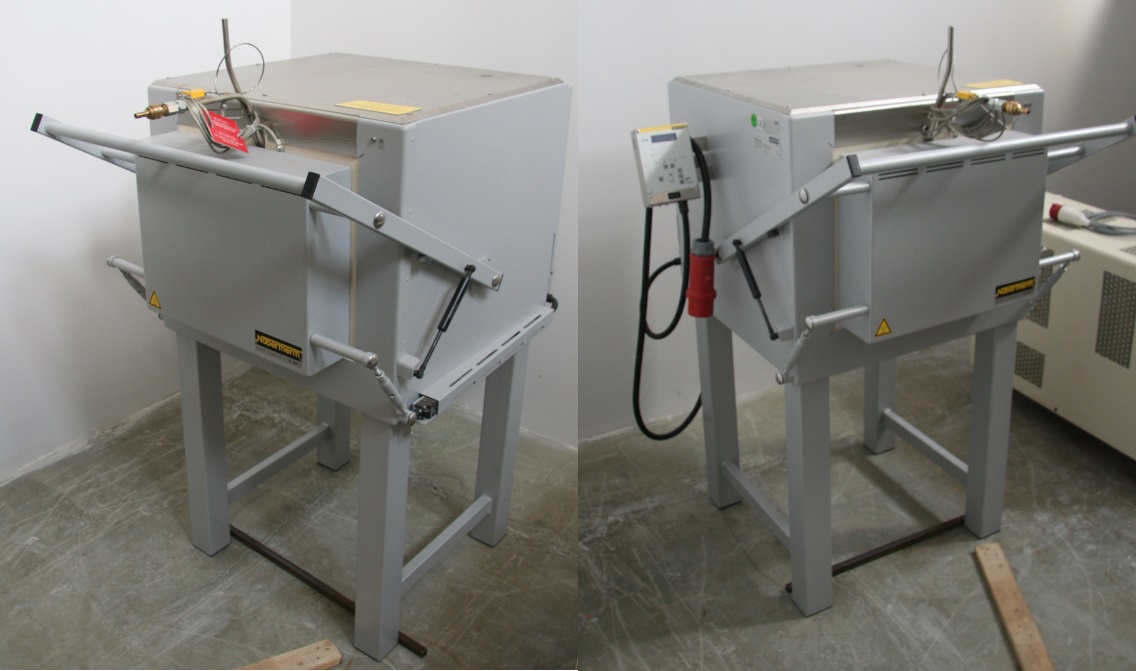
This machine relieves stress. At the metal.

Shot blasting
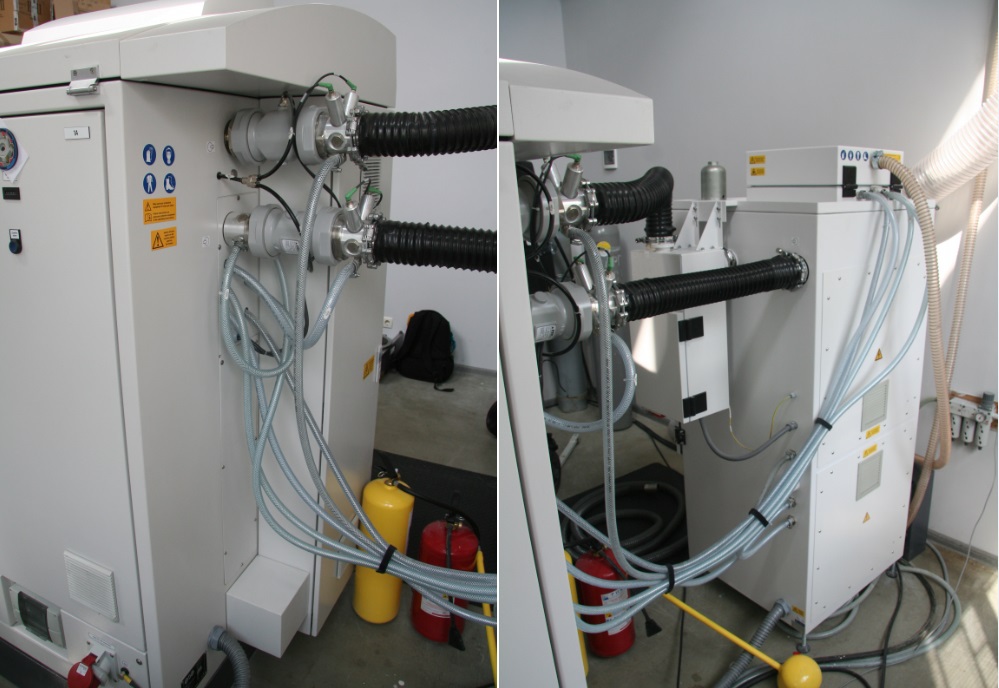
Connection with filter and cleaning
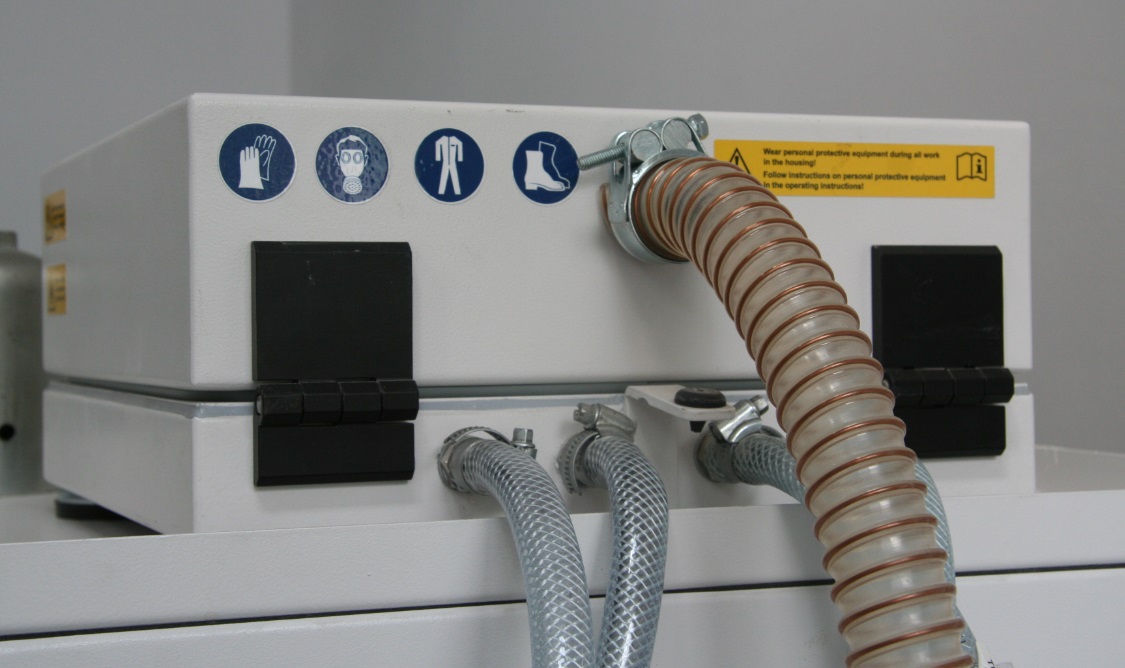
Final cleaning and gas release to the atmosphere
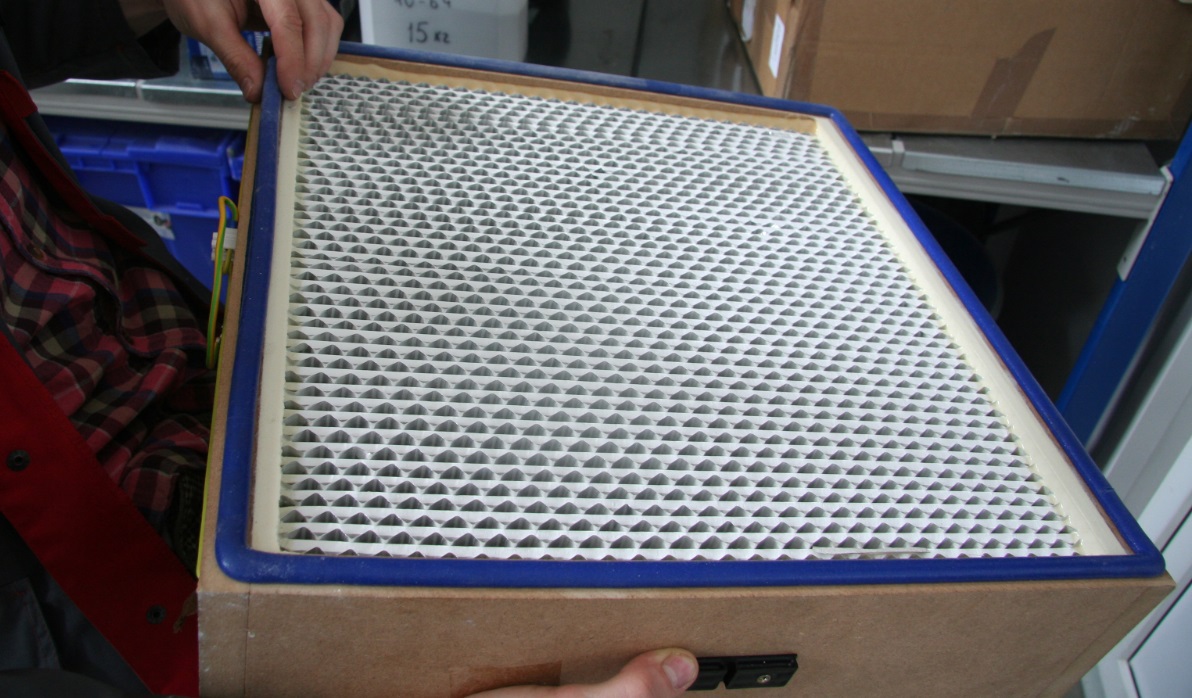
Filter
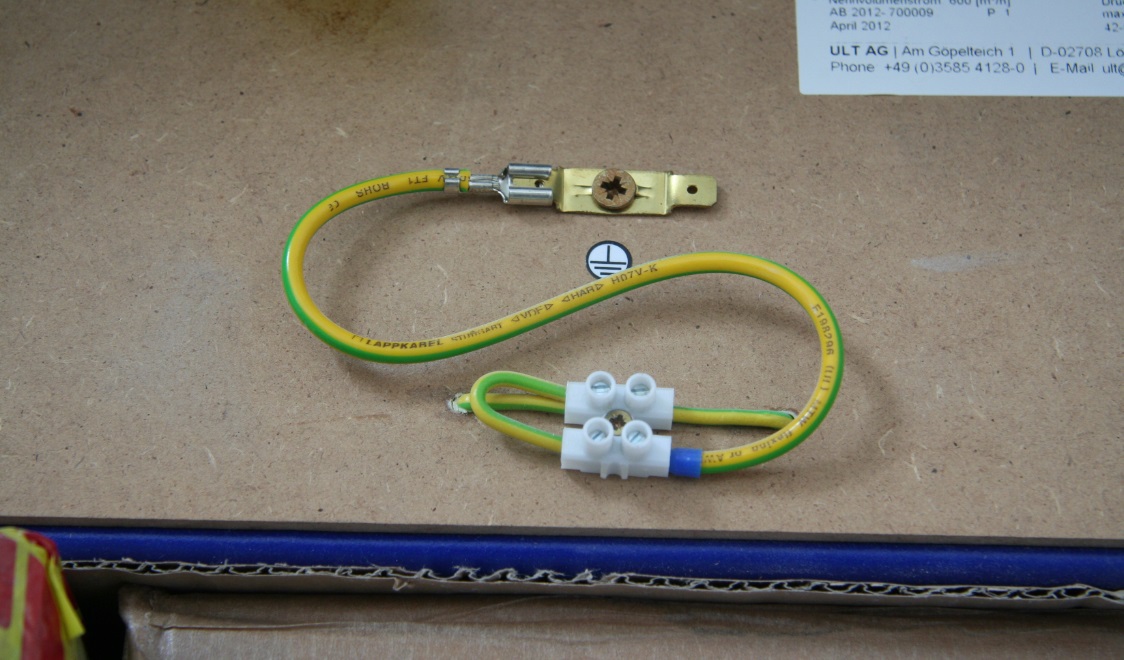
Anti-static filter protection

Special water vacuum cleaner with anti-static and anti-explosion
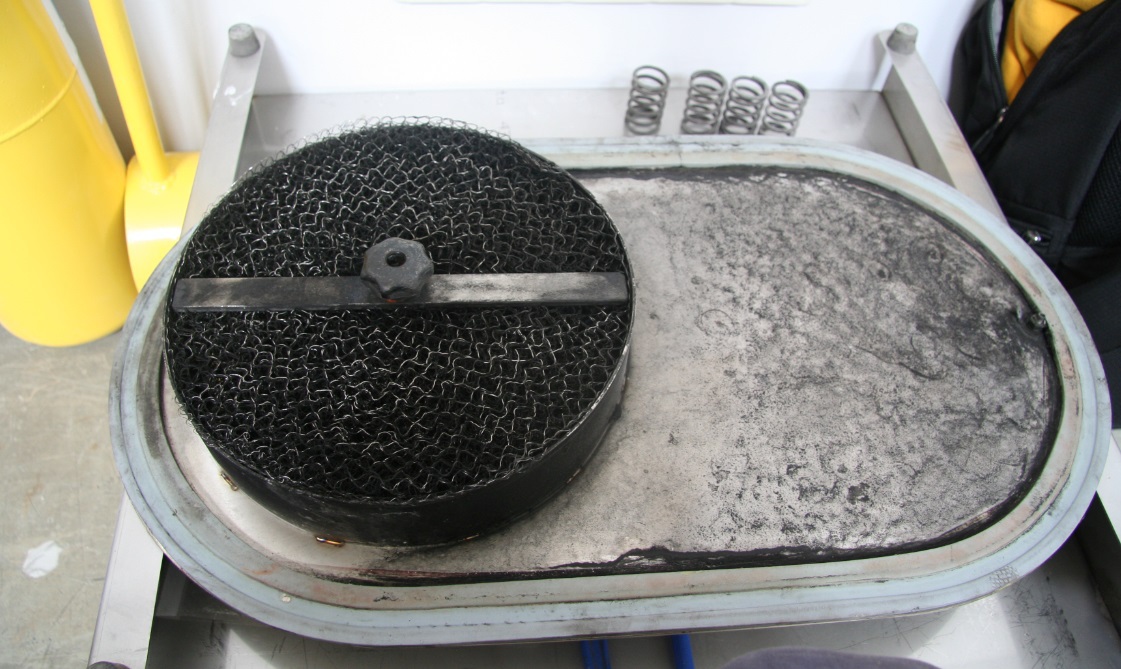
Filter in the vacuum cleaner

Oxygen sensor with siren and window opening (I could not resist and measured the CO2 content with my gadget)
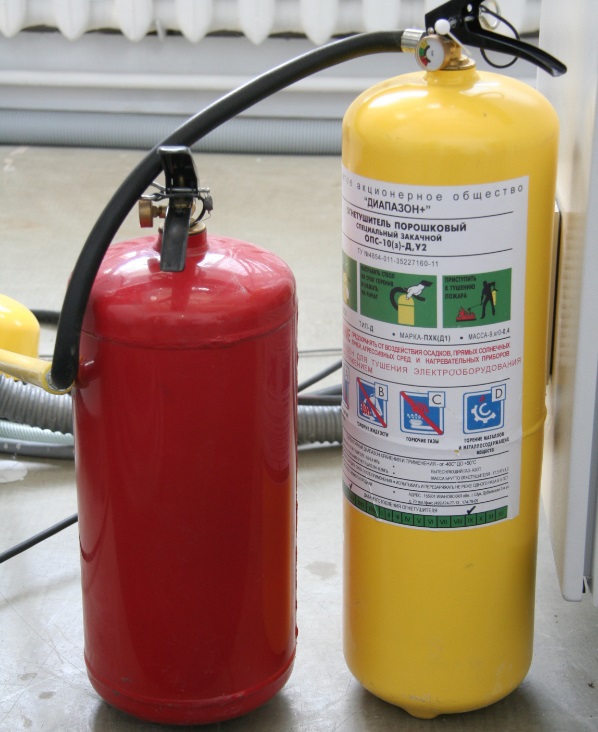
Special extinguishers to extinguish metal and powder
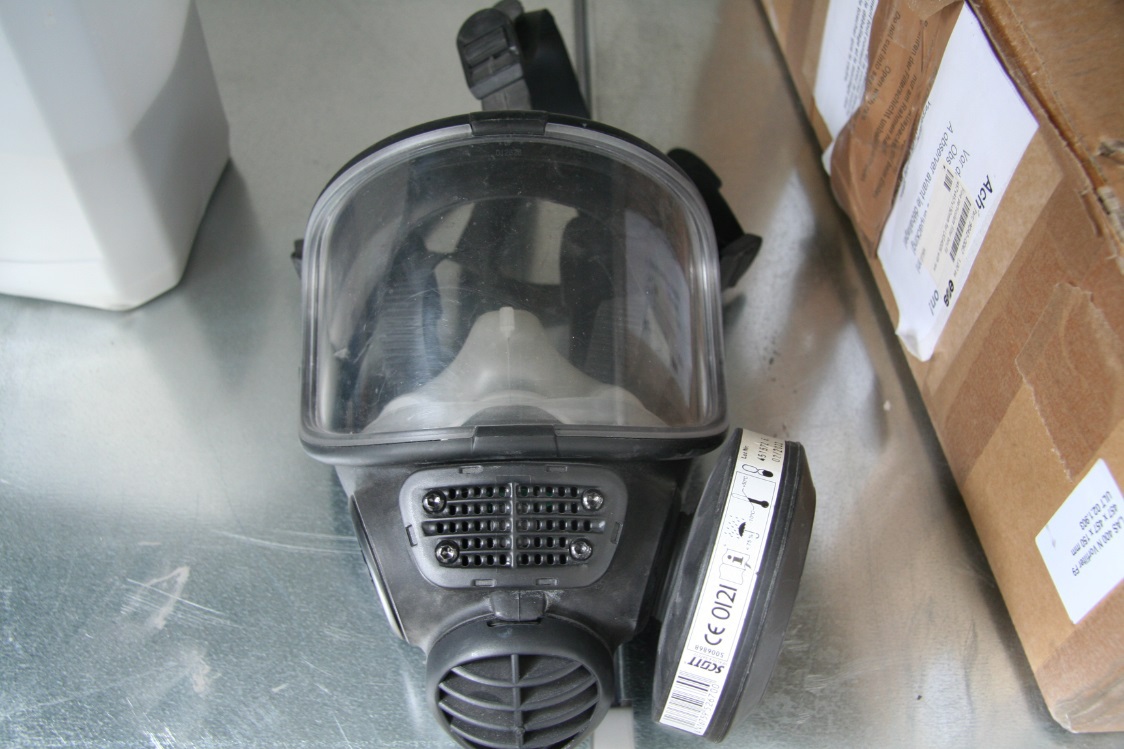
Operator mask
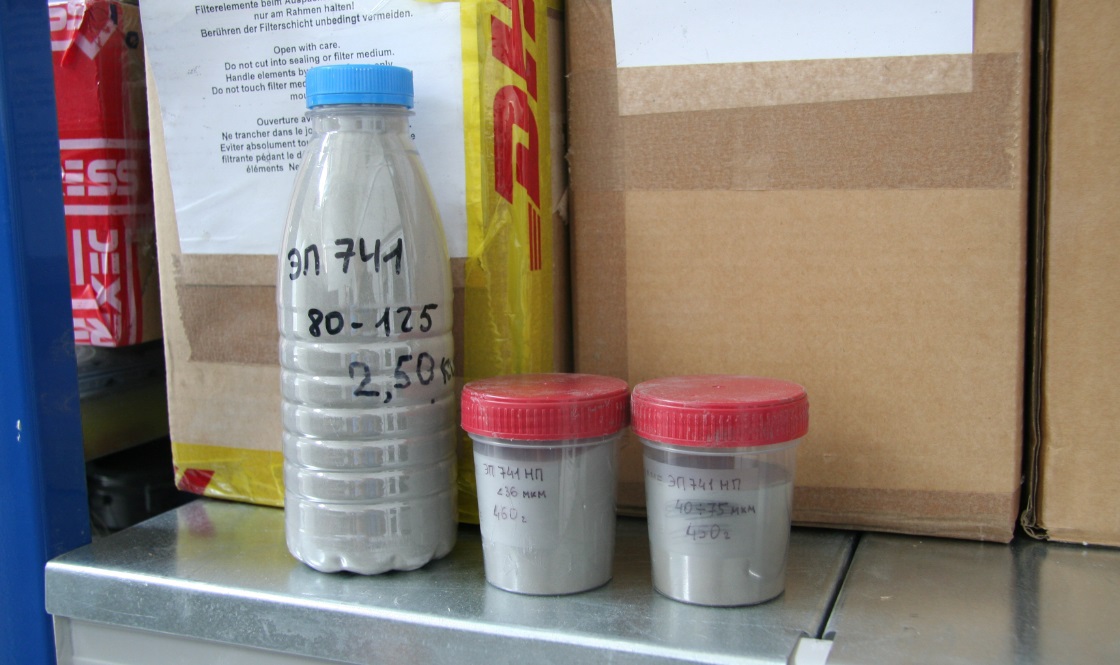
Printer powder (approx. 40 microns)

Powder sieve. Cell size 80 microns
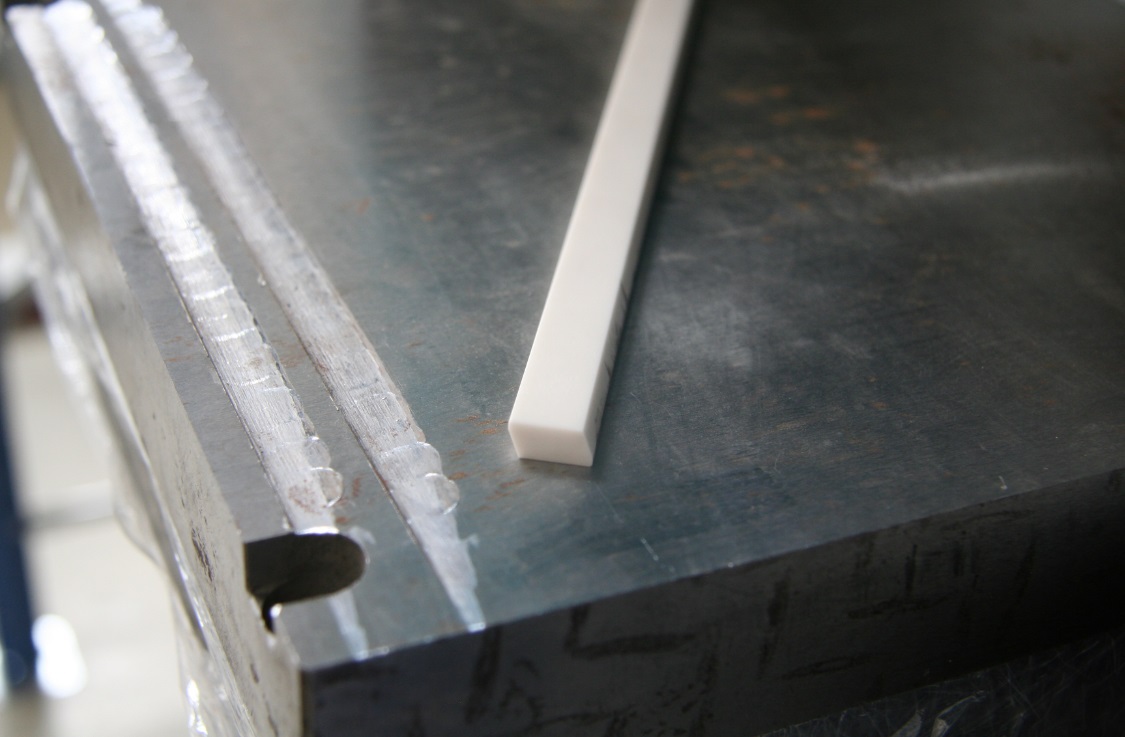
The platform on which is printed and ceramic "rovnivalka." There are saw tracks on the platform - the part is so melted that it was cut down along with part of the platform.

Consumables - powder in cans and spare printing platforms

Turbine element and support
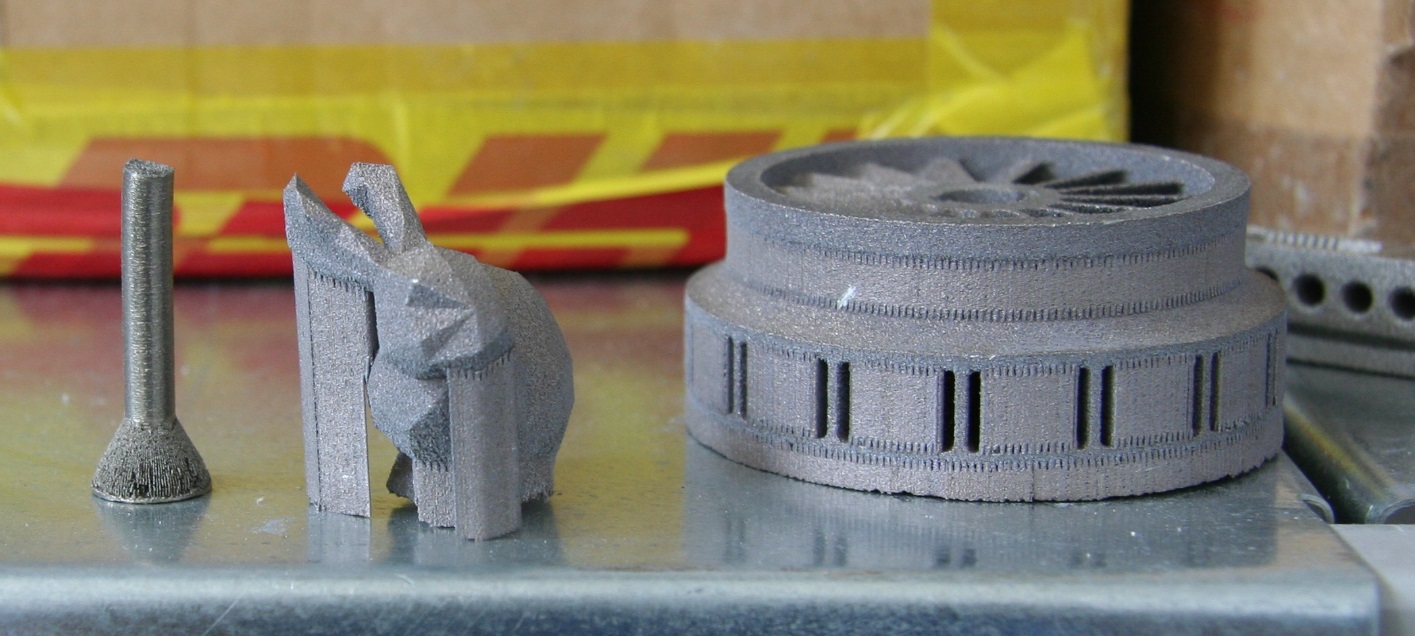
samples

Demonstration of the degree of filling when printing
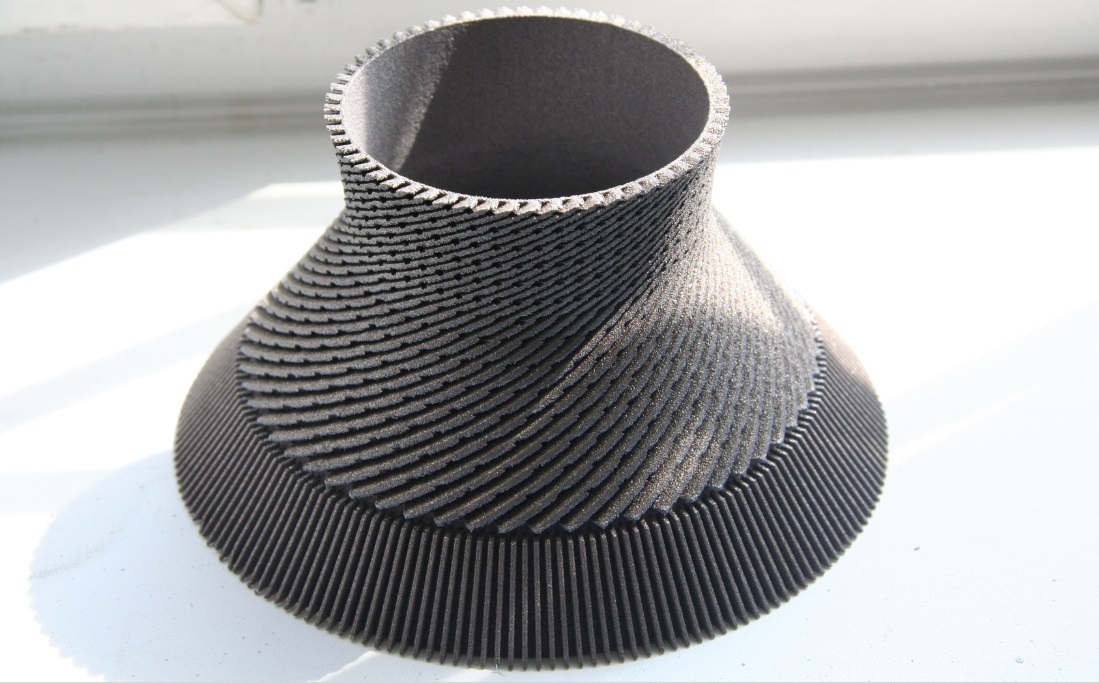
A detail that can be created only on a 3d printer and in no other way.
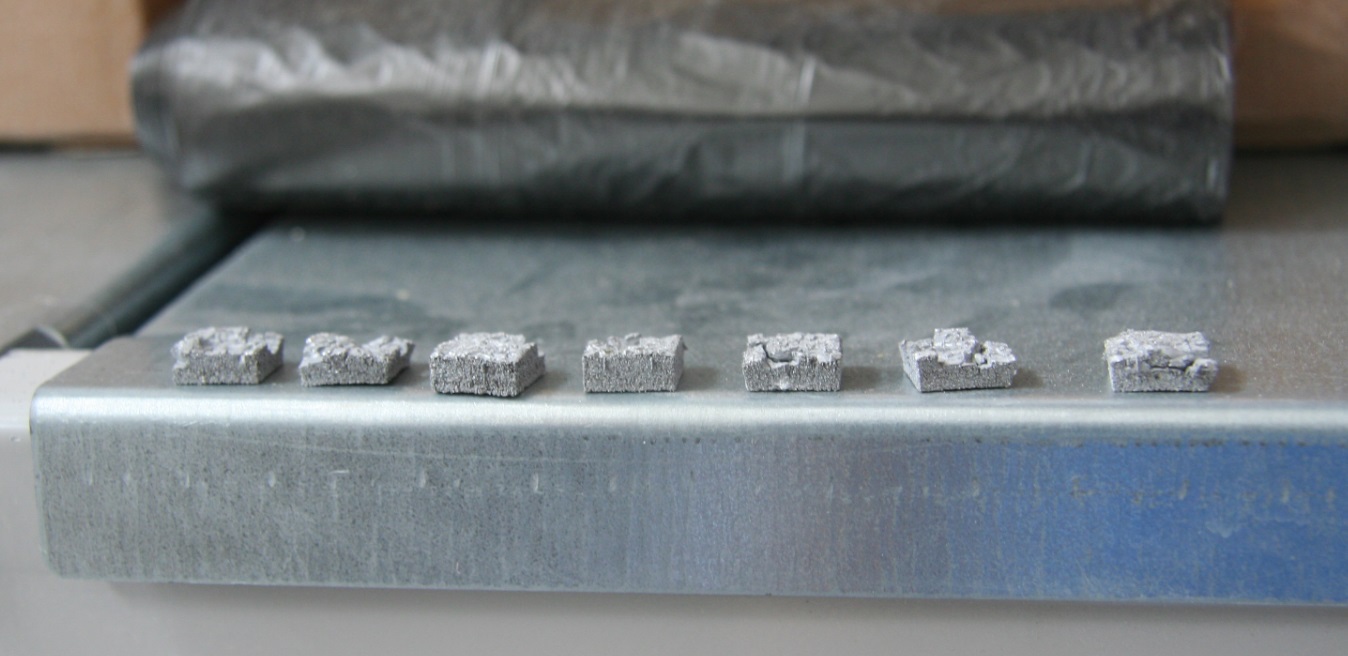
Research work - we select printing parameters, we test new powders
Ivan, the man who told me everything and showed, hinted that he was preparing a long and useful post about the full path from the powder (there the powder itself is produced in an unreal way) to the finished part. Really looking forward to.

I hold in my hands a corrective rocket engine (unique, there are no analogues in the world), the production time is 70 hours, the production cost is 5,000 euros, and the test life is 4 seconds. This engine can not be done in any way, except on the 3d-printer, allows you to win in size and weight 2 times.
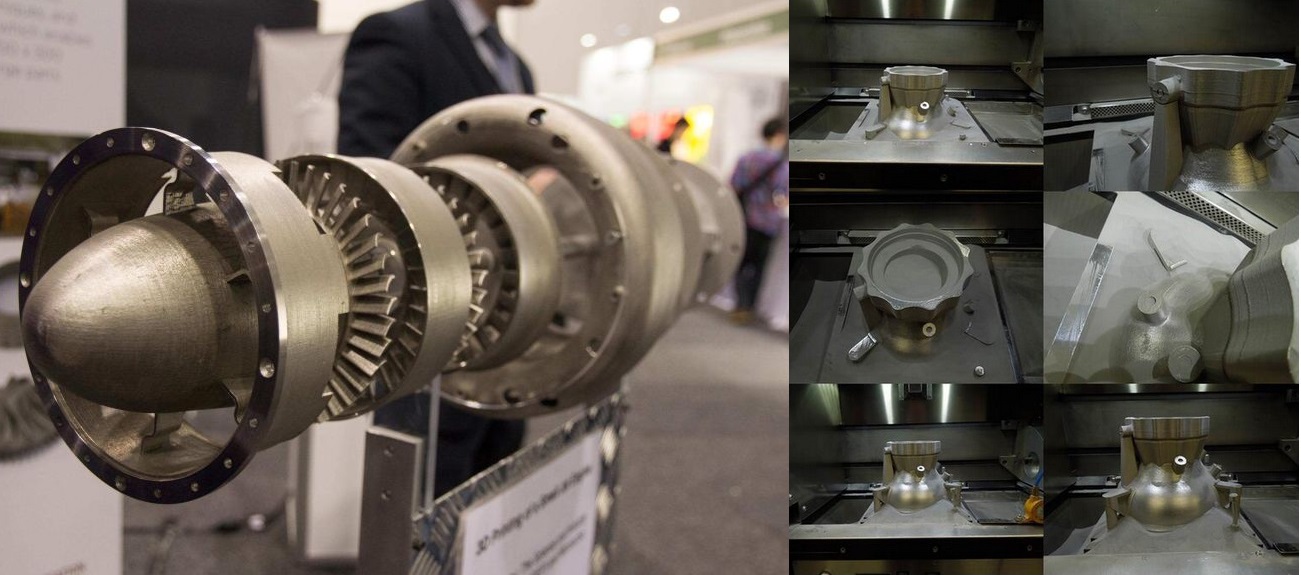
Gas turbine engine (left) and liquid fuel jet engine (right) for the Ilon Mask spacecraft.
Obviously, the metal printer is incredibly cool. But in many areas the metal is nolonger the one losing ground to ceramics, organics, textiles. Everyone is used to the fact that Terminator is made of iron, and Asimov could not have imagined that his robots are likely to be made of plastic. Dark Templar is still opposed to zerlings. But Overlord is already on the approach.
Thanks to AB Universal in the person of vabank_knabav for an interesting excursion and demonstration of a metal 3d-printer.
Thank you to Rec for interesting cases and high-quality plastic.
And also to all those who make things useful for humanity with the help of 3d-printers.

Design layout of the on-board power source for the newest heavy-duty oxygen-hydrogen upper stage unit (RB KVTK) for the Angara heavy rocket
NASA sent a man to the moon and back, and now on smartphones that exceed the computing power of NASA computers, people send “Yo!” To each other, and birds to pigs.
With 3d printing is almost the same situation. It is clear that metal 3d-printers are already working wonders, they have been printed on both a liquid-fuel jet engine for a spacecraft and a gas turbine engine. But what about plastic? Print whistles or covers for phones?
')
What is useful (really useful) printed ABS / PLA plastics in Russia? I threw the call to my fellow hackers, they advised to contact the company that produces plastic for 3d printers REC (once I went to visit them and described the PLA production process ). In addition to the iron man's costume (more than 10 km of plastic, more than 1200 hours of printing), there are also practically useful examples from medicine and rocket production.
2 years after the start of writing on Habré about 3d-printers, I still managed to get into the shop with a metal printer. And he held the secret rocket engine in his hands. A brief overview of the industrial metal printer. Now everyone can feel like Ilon Mask and print his own rocket engine. Or a bunny.
The medicine
Metal 3d-printers are widely used in dentistry and prosthetics .
Plastic is also beneficial.
Health sprint

This startup is a resident of Neuron Hackerspace. They make individual comfort orthoses for the forearm and fingers. In early 2015, he attracted $ 100,000 in a sowing round of financing from Maxfield Capital venture fund.
The project uses printers Replicator 2, and about the material for printing Fedor Aptekarev, the founder of the project, says the following:
“We take the choice of plastic very seriously, we tested a lot of options and focused on REC products. Firstly, they have a pleasant color range, which is important, as it is a little uplifting. Secondly, since our products are medical in nature, it is important for us to see how this plastic is made and what the shop looks like. And what exactly this thread came out of this machine (and not as Chinese plastic - today from one basement of China, tomorrow from another). We checked REC PLA in the lab and got evidence that it is non-toxic. ”
Fedor's speech about his project
Motility
(a bit offtopic, as printed with plastic, but on industrial printers)

Motorika is developing functional upper limb prostheses for children and adults, as well as new methods of teaching and rehabilitating people with upper limb injuries.
Currently, Motorika produces two products: an active traction prosthetic brush and a multifunctional prosthesis of the forearm with myo-control.
Artificial brush "Stradivary"
Demonstration of the prosthesis (Daniel from Saratov)
Speech by the head of the company, Ilya Chek, on the “science fights” Science Slam

Article about the creation of the first prosthesis on Habré.
Space

7 kilograms of plastic and a month of work was spent on the project. Printed on Replicator 2x - on two printers in parallel, ABS plastic from REC.
Thanks to Alexander from FSUE GKNPTs them. Mv Khrunichev for sharing information about his project, as well as colleagues from KBhimmash them. A.M. Isaeva.
UPD
Alexander's colleagues turned to me and now I decided to restore justice and tell a few words about the creator of the project.
Alexander Kuznetsov, leading engineer, in his 28 years (with a state award - engineering fame). He began by assembling RepRapa himself, then at the RKZ plant (rocket space plant), Khrunichev made a prototyping and additive technologies laboratory and continues to develop it as far as possible.
The project BIP laid 1-1.5 years and several million rubles.
Alexander did it in 1.5 months and 400 times cheaper.
The model accelerated the search for problems and turned out to be useful even for welders; they also need models to understand how to crawl with welding.

Computer modeling, while remaining virtual, does not solve all problems and does not allow to detect all errors and shortcomings in the design of products and their blocks, i.e., complex prefabricated systems consisting of units of various purposes and interconnected by “tricky” geometrical layout.

In KBhimmash them. A. M. Isaeva in the framework of work on the newest heavy-duty oxygen-hydrogen upper stage unit (RB KVTK) for the Angara heavy rocket, research is being carried out on the possibility of using additive 3D printing technology with plastic materials for the manufacture of a design mock-up of an onboard power source (BIP). BIP is designed to supply the working fluid with the specified parameters (flow, pressure, temperature) of 2 hydraulic actuators of the hydraulic system of electrohydraulic servo drives (GS EHS) ensuring the functioning of the Angara rocket engine RD0146D.

BIP is a rather complex system, both in terms of circuit design and in terms of design. It includes a wide range of different units, such as regulators, gearboxes, pneumatic and electropneumatic valves, a turbopump unit, a heat exchanger, etc. On the other hand, the BIP has acceptable overall dimensions (460 × 650 × 750 mm), which allows you to choose it from a point view of working off technology.

At the first stage of preparation of solid-state models for printing, it was considered more reasonable to refuse printing fasteners and use metal bolts, nuts, etc. to build the layout. This decision was explained on the one hand by the laboriousness of making 3D models of fasteners with “drawn” thread and a minimum pitch of 1 mm in this thread (which is required to ensure acceptable printing accuracy), on the other hand by the availability and prevalence of various metal fasteners.

At the stage of printing models, it was decided to abandon the idea of printing pipelines of a given geometry. The decision was made due to the presence of shrinkage and inaccuracies of the geometrical dimensions of the produced plastic models and the impossibility of bending or adjusting the plastic pipeline “in place” on the assembled layout. As a result, the probability of a mismatch between the coordinates of the end elements of the pipelines and the coordinates of the response elements turned out to be too high. The use of metal pipes eliminated this problem by the possibility of “bending” the pipes “in place”. However, metal, and, consequently, heavier pipelines would create a significant load on the supporting elements of the layout, made of plastic. As a result of the analysis, a compromise solution was chosen: the pipeline elements (elbows, tips, tees, etc.) were made of plastic, and the pipes were made of metal. At the same time, the wall thickness of the pipes was replaced as much as possible from 1 mm to 0.5 mm to facilitate the whole structure.

Due to the difficulty of making threads using a printer, it was decided to make them with swords and dies on the finished plastic parts. There were problems with the implementation of external threads on cylindrical surfaces of parts, but they turned out to be completely solvable by simply increasing the percentage of material filled with the material when printing elements.

Carrying out the same functions as the usual metal design layout (checking the collection, testing assembly technology, finding errors and inaccuracies in the design documentation, laying electricians, etc.), the plastic layout is much cheaper. According to preliminary estimates, its cost is 10-15 times less than the cost of a design model of metal. There is no need to attract a large number of related services and workers who contribute additional operations to the process (ordering and cutting metal, designing and manufacturing dies, turning, milling and other mechanical operations, etc.). The chain of performers is reduced to “designer - operator of a 3D printer - fitter”, which, in turn, also significantly speeds up and simplifies the process of making a design layout.
Layout looks solid at exhibitions

PS
Ivan Moshkin from the “ 3D Printing Lab ” suggested a cool and useful thing for those who like to solder


Download thing thingiverse.com/thing:801279

Metal 3d-printer EOSINT M 280
The cost of 1 000 000 euros (~ 500 desktop 3d-printers).
Technical details
- Maximum size of working area (including platform): 250 mm x 250 mm x 325 mm
- Laser type: Ytterbium fiber laser, 200 W or 400 W (optional)
- Optics: F-theta-lens, high-speed scanner
- Scan speed: up to 7.0 m / s
- Spot size: 100 - 500 microns
- Electricity consumption: maximum 8.5kW (average 3.2kW), 32 A
- Nitrogen Generator: Built
- Compressed air: 7000 hectopascals; Max. 20 m3 / h
Dimensions (L x W x H)
- Installation: 2200 mm x 1070 mm x 2290 mm
- Recommended room: 4.8 mx 3.6 m x 2.9 m
- Weight: 1250 kg
Data preparation
- PC with Windows system
- Software: EOS RP Tools; EOSTATE; Magics RP (Materialize)
- Format: STL (option - converter from all standard formats)
- Network: Ethernet

Top right - siren with flasher, if something went wrong

Alarm button

Camera for baking. Inside the chamber - gas. The system can work with nitrogen or argon as a protective gas. This allows you to use a wide range of materials on the installation: light metals, stainless and tool steels, titanium, nickel alloys, cobalt.

Gas sensors

A window with a laser. 400W Solid State Ytterbium Fiber Laser




Unkillable keyboard

"Coolers". The cooling system lurked in the next room.

This machine relieves stress. At the metal.

Shot blasting

Connection with filter and cleaning

Final cleaning and gas release to the atmosphere

Filter

Anti-static filter protection

Special water vacuum cleaner with anti-static and anti-explosion

Filter in the vacuum cleaner

Oxygen sensor with siren and window opening (I could not resist and measured the CO2 content with my gadget)

Special extinguishers to extinguish metal and powder

Operator mask

Printer powder (approx. 40 microns)

Powder sieve. Cell size 80 microns

The platform on which is printed and ceramic "rovnivalka." There are saw tracks on the platform - the part is so melted that it was cut down along with part of the platform.

Consumables - powder in cans and spare printing platforms

Turbine element and support

samples

Demonstration of the degree of filling when printing

A detail that can be created only on a 3d printer and in no other way.

Research work - we select printing parameters, we test new powders
Ivan, the man who told me everything and showed, hinted that he was preparing a long and useful post about the full path from the powder (there the powder itself is produced in an unreal way) to the finished part. Really looking forward to.

I hold in my hands a corrective rocket engine (unique, there are no analogues in the world), the production time is 70 hours, the production cost is 5,000 euros, and the test life is 4 seconds. This engine can not be done in any way, except on the 3d-printer, allows you to win in size and weight 2 times.
Total

Gas turbine engine (left) and liquid fuel jet engine (right) for the Ilon Mask spacecraft.
Obviously, the metal printer is incredibly cool. But in many areas the metal is no
Thanks
Thanks to AB Universal in the person of vabank_knabav for an interesting excursion and demonstration of a metal 3d-printer.
Thank you to Rec for interesting cases and high-quality plastic.
And also to all those who make things useful for humanity with the help of 3d-printers.
Source: https://habr.com/ru/post/258937/
All Articles